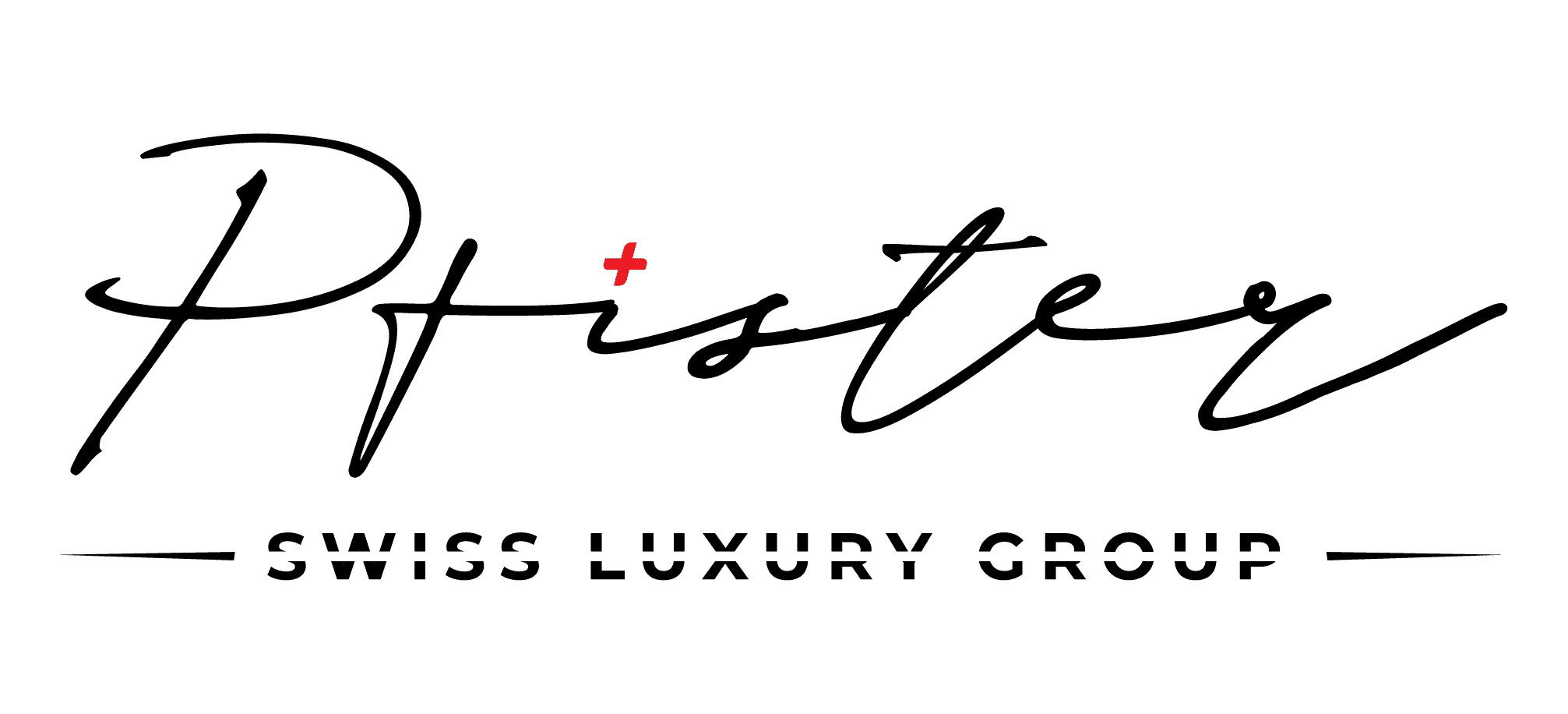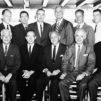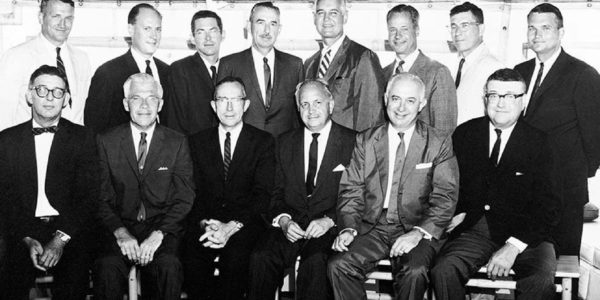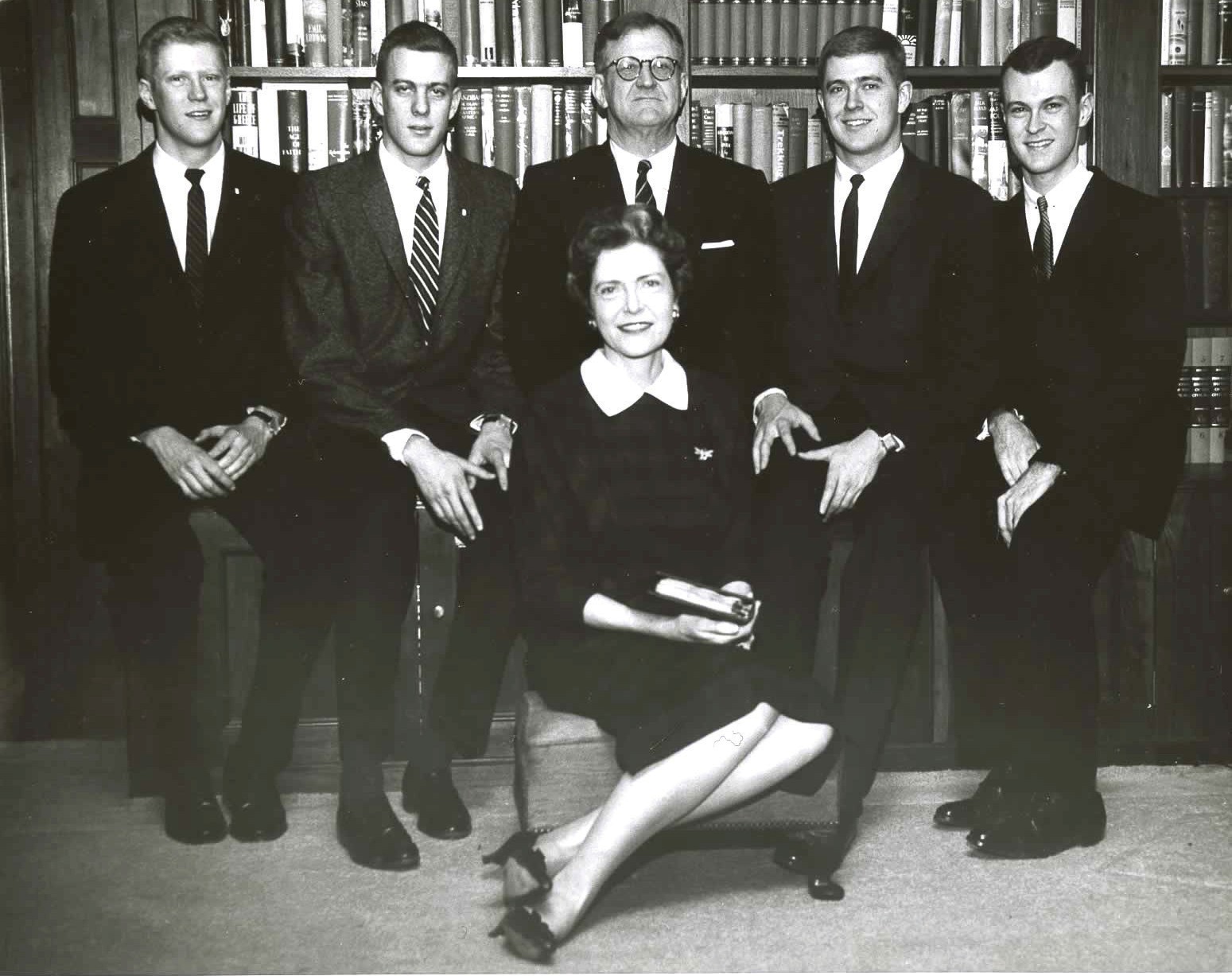
THE KOCH FAMILY The Architects of Political Weaponization $125 Billion Energy Empire and $1.1 Billion Influence Machine
- I. Introduction: The Masters of Industrial-Political Synthesis
- II. Ideological Roots: Fred Koch and the DNA of Anti-Communist Extremism
- III. Charles Koch: Sophistication of the Radical Heritage (1961-present)
- IV. The Vertical Industrial Empire: From Refinery to Global Pipeline
- V. The “Kochtopus”: Architecture of Political Influence Network
- VI. Domination Mechanisms: Systemic Regulatory Capture
- VII. Generational Transition: Chase Koch and Strategic Innovation
- VIII. Structural Vulnerabilities and Emerging Threats
- IX. Strategic Adaptations and Continuous Innovation
- X. Reproducible Patterns for Family Offices
- XI. Energy Geopolitics and International Soft Power
- XII. Conclusion: The Ultimate Blueprint for Politico-Economic Domination
I. Introduction: The Masters of Industrial-Political Synthesis
THE KOCH FAMILY The Architects of Political Weaponization $125 Billion Energy Empire and $1.1 Billion Influence Machine
The Koch dynasty represents the ultimate evolution of political weaponization of modern industrial wealth. With Koch Industries generating $125+ billion in annual revenue and a political influence network having spent $1.1+ billion since 2009, they have created the perfect model for simultaneous domination of a critical economic sector and the political landscape that regulates it.
Unlike the Cargills who discreetly dominate agriculture or the Mellons who control financial infrastructure, the Kochs understood a fundamental truth of modern political economy: in highly regulated sectors like energy, those who control the regulators control the industry itself. Their genius lies in simultaneously building a vertical industrial empire and a political influence machine that protects and optimizes that empire.
This strategy of domination through systemic regulatory capture, combined with ideological sophistication that transforms private interests into philosophical crusades, makes them the ultimate blueprint for family offices operating in sectors exposed to intensive government regulation
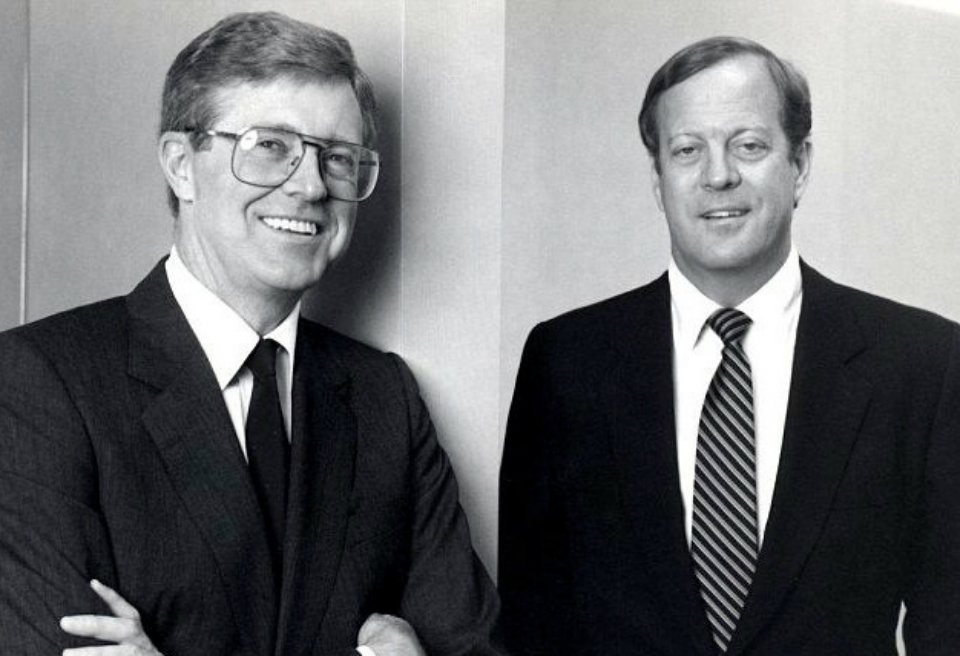
II. Ideological Roots: Fred Koch and the DNA of Anti-Communist Extremism
The Koch empire begins with Fred Chase Koch (1900-1967), an MIT engineer who forged a unique synthesis between international commercial opportunism and domestic ideological radicalism. This contradictory duality – brutal business pragmatism + political fanaticism – becomes the permanent family DNA that still influences Koch strategies today.
Contradictory Commercial Origins: In the 1930s, Fred Koch built refineries for two opposing totalitarian regimes: 15 thermal cracking units for Stalin in USSR (1929-1932) and petroleum installations for Nazi Germany. This experience forged his worldview: he found populations of fascist nations “better off and more motivated to work hard” than in countries with government safety nets. This admiration for authoritarian efficiency profoundly influenced his future political philosophy.
John Birch Society Foundation (1958): Fred Koch became one of 11 founding members of the John Birch Society, the era’s most radical anti-communist organization. In December 1958, in an Indianapolis living room, he joined Robert Welch to create a movement that considered President Eisenhower a “communist agent” and Earl Warren a “traitor.”
Transmitted Parental Ideology: Fred instilled in his sons a paranoid worldview where:
- Federal government = instrument of communist conspiracy
- Civil rights = Soviet manipulation to divide America
- Public education = Marxist indoctrination of children
- Labor unions = communist cells in industry
- Business regulation = step toward total collectivization
This ideological paranoia becomes the intellectual foundation that later justifies all Koch political activities as “defense of freedom” rather than protection of commercial interests
III. Charles Koch: Sophistication of the Radical Heritage (1961-present)
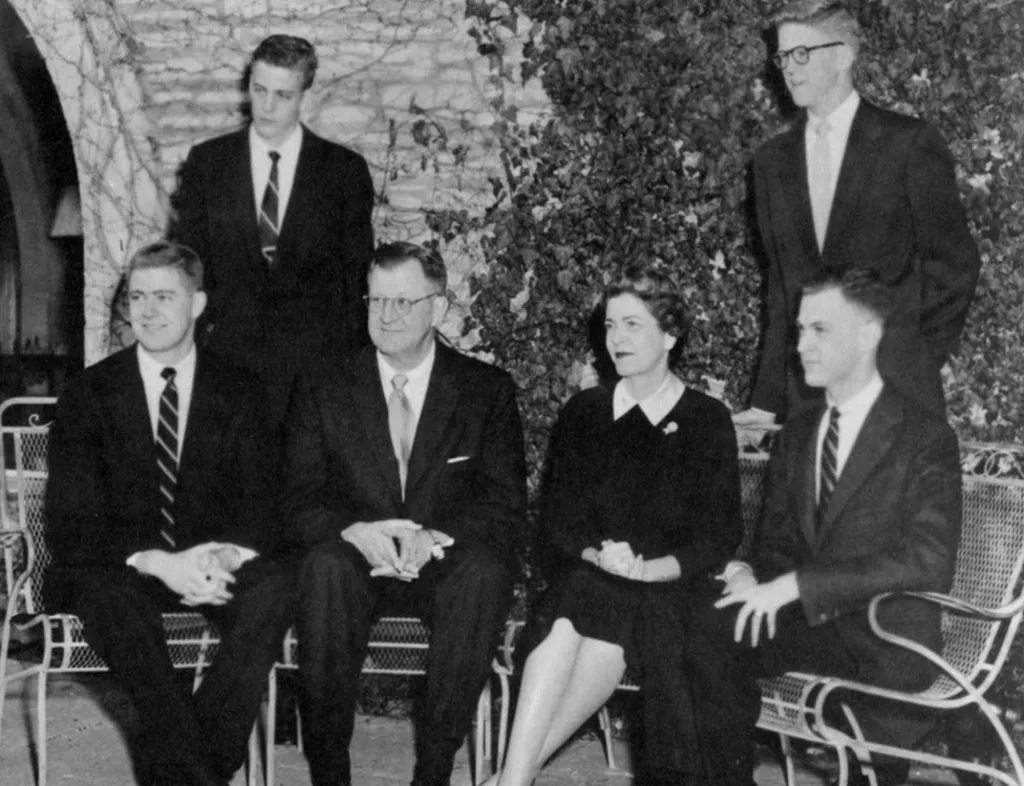
Charles David Koch (born 1935) transforms crude paternal anti-communism into sophisticated libertarianism while maintaining fundamental political objectives. This tactical evolution allows the Kochs to transition from fringe radicals to respectable mainstream conservative intellectuals.
Formation and Ideological Transition:
- MIT Engineering (1957): Technical training that forged his mechanistic view of economics
- John Birch Society Member (1961-1968): Continued paternal engagement until Fred’s death
- Cato Institute Co-founder (1977): Transformed anti-communism into intellectual libertarianism
- Reason Foundation Support: Financed think tanks that academically legitimized his positions
Key Strategic Innovation: Charles understood that 1960s hysterical anti-communism couldn’t function post-Cold War. He reformulated the same objectives (government reduction, industry deregulation, social program opposition) under respectable philosophical labels: “economic freedom,” “constitutional government,” “individual liberty.”
The Philosophy of Disguised Self-Interest: Charles developed pseudo-philosophical justification for his business interests via “Market-Based Management” (MBM):
- Free markets = moral imperative, not simple efficiency tool
- Government regulation = violence against individual freedom
- Corporate profits = measurement of social contribution
- Business success = proof of moral superiority
This philosophy allows presenting any Koch Industries-favorable policy as matter of principle rather than self-interest.
IV. The Vertical Industrial Empire: From Refinery to Global Pipeline
Koch Industries represents the most complete vertical integration in the American energy sector, controlling every stage from extraction to final consumption. This sectoral domination generates the massive cash flows that finance their political machine.
Integrated Industrial Structure:
Upstream – Extraction and Production:
- Koch Exploration Company: Oil & gas properties in US, Canada, Brazil
- Pine Bend Refinery (Minnesota): 375,000 barrels/day capacity, one of most efficient US refineries
- Corpus Christi Refineries (Texas): 350,000 barrels/day combined capacity
- Alaska Operations: North Pole refinery + 3% Trans-Alaska Pipeline ownership
Midstream – Transport and Storage:
- Koch Pipeline Company: 4,000+ miles pipeline network (crude, refined products, natural gas liquids)
- Colonial Pipeline: Largest ownership stake in world’s largest refined products pipeline
- Strategic Terminals: National network of storage and distribution facilities
Downstream – Processing and Chemicals:
- Flint Hills Resources: Integrated refining, chemicals, polymers, biofuels
- INVISTA: Nylon, spandex, polyester fibers (acquired from DuPont 2004, $4.2B)
- Koch Chemical Technology: Process equipment manufacturing, pollution control systems
Adjacent Industries – Strategic Diversification:
- Georgia-Pacific: $21B acquisition (2005), forest products, building materials, consumer paper
- Guardian Industries: Glass manufacturing for automotive and construction
- Molex: Electronic components ($7.2B acquisition 2013)
- Matador Cattle Company: 445,000 acres ranching operations (Montana, Kansas, Texas)
Revenue Streams and Market Position:
- Total Annual Revenue: $125+ billion (2nd largest US private company after Cargill)
- Global Employees: 122,000 across 60 countries
- Market Dominance: Top 3 player in refining, pipelines, chemicals, forest products
- Geographic Reach: Priority operations in US Midwest and Texas Gulf Coast
This integration allows the Kochs to capture value at every stage of the energy value chain while creating quasi-insurmountable barriers to entry for competitors.
V. The “Kochtopus”: Architecture of Political Influence Network
The Kochs have created the most sophisticated and comprehensive political influence network in modern American history, dubbed “Kochtopus” by critics. This network operates on multiple levels simultaneously: electoral politics, policy research, grassroots organizing, judicial influence, and academic capture.
Americans for Prosperity (AFP) – The Electoral Flagship:
- 2024 Budget: $157M+ spent in federal elections, record breaking
- AFP Action Super PAC: $49M direct Koch Industries donations + $43M via dark money groups
- Membership: 3.2M+ activists across all 50 states
- Infrastructure: 700+ full-time staff, offices in 38 states
- Strategy: Focus on key Senate races (Ohio, Pennsylvania, Michigan, Montana, Nevada)
Think Tank Empire – Intellectual Legitimacy:
- Cato Institute: Co-founded by Charles (1977), “libertarian” policy research
- Heritage Foundation: Major funding via Koch network, $55M+ to Project 2025
- American Enterprise Institute: Support for conservative economic research
- Mercatus Center (George Mason University): Koch-funded academic research justifying deregulation
- Reason Foundation: Intellectual foundation for libertarian policies
Dark Money Infrastructure – Untraceable Influence:
- Stand Together Chamber of Commerce: $150M+ funding (2021-2022)
- CCKC4: Charles Koch-led “dark money” entity funding Stand Together
- 85 Fund & Concord Fund: Leonard Leo network collaboration, $50.7M+ to Project 2025
- Americans for Prosperity Foundation: 501(c)(4) status permits unlimited political spending
Judicial Capture Strategy:
- Federalist Society: Major funding for conservative judicial selection
- Supreme Court Amicus Briefs: AFP Foundation filed 23 briefs (2023), 14 to Supreme Court
- Judicial Nominee Support: Coordination with Leonard Leo network for conservative judges
Academic and Cultural Influence:
- University Programs: Funding economics departments promoting free-market ideology
- Student Organizations: Campus groups promoting Koch-friendly policies
- Professor Fellowships: Academic positions contingent on ideological alignment
- Curriculum Influence: Textbook and course content reflecting Koch worldview
VI. Domination Mechanisms: Systemic Regulatory Capture
The Energy Revolving Door
Koch Industries has systematically populated energy regulatory agencies with former employees and recruits regulatory officials into lucrative private sector positions. This revolving door ensures regulatory capture at federal and state levels.
Federal Level Placements:
- Department of Energy: Multiple Koch alumni in senior policy positions
- EPA: Former Koch employees in key regulatory roles
- FERC: Federal Energy Regulatory Commission infiltration
- Pipeline Safety Administration: Koch influence on safety regulations
State Level Strategy: Koch focuses particularly on states with major energy operations (Texas, Kansas, Minnesota, Alaska) where state regulators control permitting, environmental compliance, and taxation.
Regulatory Outcome Optimization: This capture generates measurable returns:
- Environmental Penalties Reduced: $20M fine vs potential $100M+ exposure (historical pattern)
- Permitting Acceleration: Faster approvals for Koch projects vs competitors
- Safety Regulation Relaxation: Industry-friendly interpretations of safety rules
- Tax Benefits: State and local tax incentives via political relationships
Information Warfare and Climate Change Denial
Koch Industries has invested an estimated $100M+ since the 1990s in climate change denial and anti-environmental movement, protecting fossil fuel investments against regulatory threats.
Climate Denial Funding Network:
- Heartland Institute: Major Koch funding for climate skepticism
- Competitive Enterprise Institute: Anti-regulation advocacy organization
- Americans for Tax Reform: Opposition to carbon taxes and environmental fees
- George C. Marshall Institute: “Scientific” opposition to climate science
Strategy Evolution:
- 1990s-2000s: Direct denial of climate change science
- 2010s: Shift to “economic impact” arguments against climate action
- 2020s: “Innovation over regulation” messaging while maintaining fossil fuel dominance
Measured Impact: This strategy successfully delayed US climate action by decades, preserving trillions in fossil fuel asset values and preventing stranded asset writedowns.
Electoral Politics Weaponization
Candidate Selection Process: Koch network now effectively vets Republican candidates through:
- Primary Funding: Early money for Koch-approved candidates
- Opposition Research: Negative campaigns against non-aligned Republicans
- Media Amplification: Coordinated messaging through media properties
- Grassroots Pressure: AFP activist mobilization in key districts
Policy Outcome Delivery: Koch-supported candidates deliver specific legislative outcomes:
- Tax Cuts and Jobs Act (2017): $1.4T corporate tax reduction benefiting Koch Industries
- Regulatory Rollbacks: EPA, OSHA, Pipeline Safety regulations relaxed under Trump
- Infrastructure Spending: Koch influence on energy infrastructure priorities
- Trade Policy: Protection of Koch international investments through trade agreements
2024 Electoral Strategy Innovation: Rather than supporting Trump (ideological concerns), Koch network backed Nikki Haley with $32M, then pivoted to down-ballot races after primary defeat. This sophistication shows strategic evolution beyond simple partisan politics.
VII. Generational Transition: Chase Koch and Strategic Innovation
Chase Koch (born 1977), Charles’s son, represents 3rd generation family adaptation to changing political and economic landscape. His approach combines traditional Koch methods with new technologies and generational insights.
Formation and Philosophy:
- Texas A&M University: Engineering background like grandfather and father
- Koch Industries Executive VP: Operational experience across business divisions
- Stand Together Foundation: Leadership in Koch philanthropic efforts
- Technology Integration: Focus on digital organizing and data analytics
Strategic Innovations:
- Bipartisan Positioning: Selective collaboration with Democrats on narrow issues (criminal justice reform)
- Social Media Sophistication: Advanced digital campaigns and influence operations
- Grassroots Technology: Apps and platforms for activist coordination
- ESG Adaptation: Environmental messaging that doesn’t threaten core business
Succession Preparation: Charles Koch (89 years old) has structured succession to maintain family control while adapting to modern political realities. Chase combines traditional Koch priorities with generational updates necessary for continued effectiveness.
VIII. Structural Vulnerabilities and Emerging Threats
Demographic and Ideological Shifts
Generational Change: Younger voters increasingly skeptical of fossil fuel industry and more supportive of climate action represent long-term threat to Koch political strategy. Polling shows 18-35 age cohort opposes Koch positions on energy, environment, and economic policy by 2:1+ margins.
Geographic Concentration Risk: Koch Industries concentrated in Red State America (Texas, Kansas, Oklahoma, Alaska) where demographic changes could eventually threaten Republican political dominance. Urban growth in Texas particularly threatens long-term Koch influence.
Educational Polarization: College-educated voters increasingly oppose Koch network positions. As higher education expands, Koch base shrinks proportionally, requiring increasingly expensive efforts to maintain political influence.
Regulatory and Legal Exposure
Climate Litigation Risk: Growing climate lawsuits target fossil fuel companies for damages and disclosure violations. Koch Industries faces potential liability for climate change denial funding and environmental damages.
Antitrust Pressure: Progressive politicians increasingly target Koch Industries for antitrust investigation. Company’s vertical integration and market dominance in multiple sectors creates vulnerability to breakup efforts.
Political Finance Regulations: Campaign finance reform efforts could limit Koch political influence through:
- Dark Money Restrictions: Disclosure requirements for political spending
- Corporate Political Spending Limits: Constitutional amendments limiting corporate political rights
- Foreign Influence Investigations: Scrutiny of international Koch business relationships
Energy Transition Economic Risk
Stranded Asset Exposure: Koch Industries has $50B+ invested in fossil fuel infrastructure that could become stranded assets in energy transition. Refinery, pipeline, and extraction investments face obsolescence risk.
Technology Disruption: Renewable energy cost reduction, battery storage improvements, and electric vehicle adoption threaten long-term demand for Koch core products.
Capital Markets Pressure: ESG investing trends limit Koch access to capital markets and increase financing costs relative to clean energy competitors.
IX. Strategic Adaptations and Continuous Innovation
Energy Portfolio Diversification
Clean Energy Investments: Koch Industries strategically invests in renewable energy projects to hedge energy transition risk while maintaining fossil fuel core business:
- Wind and Solar Projects: Selected investments where economics attractive
- Battery Technology: Research investments through Koch Disruptive Technologies
- Carbon Capture: Technology investments that extend fossil fuel viability
- Biofuels Expansion: Ethanol and renewable diesel production capabilities
Geographic Expansion: International expansion reduces dependence on US political climate:
- Asia-Pacific Operations: Growth markets with different regulatory environment
- Latin American Investments: Resource extraction in friendly jurisdictions
- European Chemicals: Market access through non-energy subsidiaries
Political Strategy Evolution
Issue Diversification: Koch network expands beyond energy issues to build broader conservative coalition:
- Criminal Justice Reform: Bipartisan issue providing political cover
- Immigration Reform: Business-friendly immigration policies
- Technology Policy: Opposition to tech regulation that could set precedents
- Free Trade Advocacy: Protection of Koch international business interests
Tactical Sophistication:
- Grassroots Astroturfing: Professional organizing disguised as citizen movements
- Academic Capture: University funding creating “independent” research supporting Koch positions
- Media Diversification: Influence across traditional media, social media, and podcasting
- Local Politics Focus: School boards, city councils, state legislatures where influence cheaper
X. Reproducible Patterns for Family Offices
Model 1: Vertical Integration + Regulatory Capture
Target Identification: Identify highly regulated industries where government policy directly impacts profitability:
- Healthcare: Insurance, pharmaceuticals, medical devices
- Financial Services: Banking, insurance, asset management
- Telecommunications: Spectrum allocation, infrastructure regulation
- Transportation: Airlines, railroads, shipping, trucking
Implementation Strategy:
- Business Integration: Acquire vertical supply chain control
- Regulatory Influence: Place personnel in relevant government agencies
- Political Network: Fund politicians supporting favorable policies
- Think Tank Support: Academic research justifying policy positions
Model 2: Ideological Camouflage Strategy
Philosophy Development: Create intellectual framework that transforms self-interest into principled positions:
- Free Market Ideology: Economic freedom arguments for deregulation
- Constitutional Originalism: Legal theories limiting government power
- Individual Liberty: Personal freedom arguments against collective action
- Innovation Policy: Technology advancement arguments against regulation
Academic Legitimization:
- University Funding: Economics, law, policy departments
- Think Tank Creation: Independent research organizations
- Publishing Support: Books, papers, and reports supporting positions
- Conference Hosting: Academic and policy forums creating expert consensus
Model 3: Multi-Level Political Influence
Electoral Strategy:
- Candidate Development: Early support for aligned politicians
- Primary Intervention: Defeat hostile incumbents in party primaries
- General Election Support: Super PAC spending in key races
- Ballot Initiative Funding: Direct democracy efforts on favorable issues
Policy Implementation:
- Legislative Drafting: ALEC-style model legislation
- Regulatory Comment: Formal input on government rulemaking
- Litigation Strategy: Court challenges to unfavorable regulations
- Administrative Influence: Agency personnel and informal pressure
Model 4: Coalition Building and Alliance Management
Issue-Based Coalitions:
- Single-Issue Organizations: Groups focused on specific policy areas
- Trade Association Leadership: Industry group coordination
- Grassroots Mobilization: Citizen activist organization
- Elite Network Participation: Exclusive donor and policy forums
Opposition Management:
- Research and Opposition: Investigation of hostile organizations
- Competitive Intelligence: Tracking opponent strategies and vulnerabilities
- Counter-Programming: Alternative events and messaging
- Wedge Issue Exploitation: Divide opponent coalitions on secondary issues
XI. Energy Geopolitics and International Soft Power
Global Energy Infrastructure Influence
Koch Industries operates energy infrastructure in 60+ countries, creating informal diplomatic influence that complements formal US government foreign policy. This global presence generates soft power opportunities that the family leverages for political and commercial advantage.
Strategic International Assets:
- Canada Pipeline Networks: Integration with US energy infrastructure
- Latin American Operations: Resource extraction and processing facilities
- European Chemical Plants: Market access and supply chain control
- Asian Trading Operations: Commodity arbitrage and distribution networks
Diplomatic Leverage Creation: Koch global operations create relationships with foreign governments that US State Department can utilize for broader diplomatic objectives. This creates symbiotic relationship where Koch business interests align with US geopolitical goals.
Climate Diplomacy and International Negotiations
Koch network influences US positions in international climate negotiations through:
- State Department Alumni: Former Koch employees in diplomatic positions
- Industry Association Representation: Official business community input on negotiations
- Congressional Pressure: Legislative opposition to climate treaties
- Think Tank Analysis: Economic impact studies undermining climate agreements
This influence successfully limited US commitments in Paris Agreement and delayed implementation of international climate policies.
XII. Conclusion: The Ultimate Blueprint for Politico-Economic Domination
The Koch empire demonstrates that in the modern highly regulated economy, sectoral domination requires simultaneous strategy of economic control and political capture. Their success proves that a family dynasty can create and maintain quasi-monopolistic position by transforming wealth generation into political influence and vice versa.
The Six Pillars of Koch Success:
Pillar 1: Complete Vertical Integration in Critical Sector Controlling the entire value chain in an essential sector (energy) creates pricing power and barriers to entry while generating massive cash flows to finance political activities. This integration also allows coordinating political messaging across multiple industry segments.
Pillar 2: Systematic and Permanent Regulatory Capture Continuous investment in revolving door personnel, think tank research, and academic influence creates permanent regulatory advantage. This capture reduces compliance costs, accelerates project approvals, and prevents hostile regulation implementation.
Pillar 3: Ideological Sophistication and Philosophical Legitimacy Transformation of business interests into principled political positions provides moral authority and intellectual cover for self-interested policies. This sophistication attracts allies who genuinely believe in the ideology rather than simply seeking economic benefit.
Pillar 4: Multi-Level Political Network with Long-Term Perspective Investment in candidates at local, state, and federal levels creates comprehensive political protection. 20+ year time horizons for political development allow building relationships before they’re needed and maintaining influence across political cycles.
Pillar 5: Coalition Management and Opposition Research Sophisticated understanding of political landscape allows Koch network to build alliances, divide opponents, and exploit wedge issues. This tactical sophistication maximizes political effectiveness of financial resources.
Pillar 6: Generational Succession Planning with Strategic Adaptation Each generation adapts tactics to contemporary political reality while maintaining core objectives. Chase Koch’s innovations show family’s ability to evolve methods without compromising fundamental goals.
Applications for Modern Family Offices:
The Koch model can be adapted to any highly regulated industry where government policy significantly impacts profitability:
Regulatory-Intensive Sectors:
- Healthcare Systems: Insurance, pharmaceuticals, medical devices, hospital networks
- Financial Infrastructure: Banking, payments, insurance, asset management
- Technology Platforms: Social media, cloud computing, artificial intelligence, data privacy
- Transportation Networks: Airlines, railroads, shipping, autonomous vehicles
- Utility Infrastructure: Electric grids, telecommunications, water systems
Success Factors for Replication:
- Patient Capital: 10-20 year investment horizons for political relationship building
- Ideological Consistency: Coherent philosophical framework justifying business interests
- Professional Management: Specialized staff for political operations separate from business operations
- Coalition Building: Alliances with like-minded families and industry groups
- Academic Investment: University and think tank relationships creating intellectual legitimacy
Strategic Warnings:
- Overreach Risk: Excessive political visibility can create backlash and regulatory retaliation
- Demographic Trends: Long-term political strategies must account for generational and geographic shifts
- Technology Disruption: Political influence cannot indefinitely protect against economic obsolescence
- International Exposure: Global operations create complexity and potential conflicts with US foreign policy
The Durable Heritage: The Koch empire proves that a family dynasty can maintain and expand its power indefinitely by understanding that in modern America, business success and political influence are inextricably linked. Their example shows that those who master this synthesis can create an empire that transcends simple wealth accumulation to achieve systemic influence over economic and political structures.
For UHNWIs and family offices, the Koch model represents the ultimate integration of capitalism and politics. Their success demonstrates that in highly regulated industries, those who control the regulators ultimately control the industry itself. This lesson remains applicable across sectors and generations, providing a template for building lasting dynastic power in the modern political economy.
The ultimate Koch innovation is their proof that ideological conviction and business interest are not contradictory but synergistic when properly managed. This synthesis allows them to attract genuine believers to their cause while serving their economic interests, creating a sustainable political movement that transcends simple transactional relationships.
Their empire stands as testament to the possibility of building permanent political-economic power through patient investment, strategic thinking, and adaptive tactics while maintaining core objectives across multiple generations
